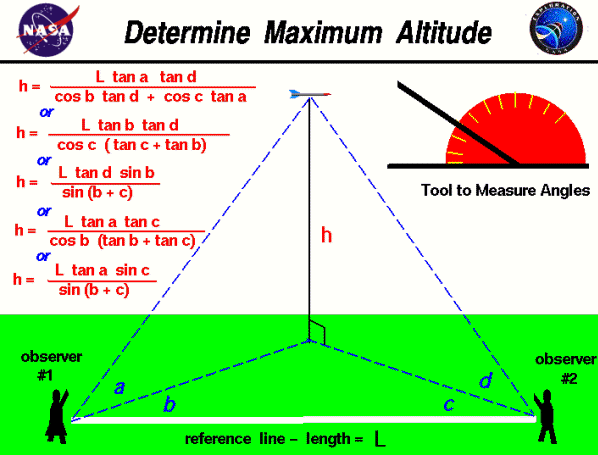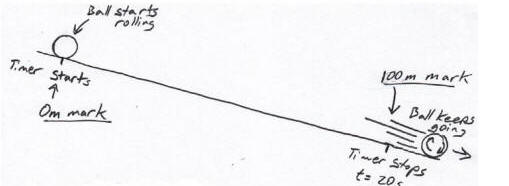Class #5
Wednesday,
11/17
A car is on a flat raft floating in a lake. Suddenly, someone starts to drive the car forward. What happens?
Today:
- Check and Review Homework.
- Finish cars.
- Road test next class.
- Begin Mousetrap Car Activity 1
Homework:
Get your car ready. Cars should be complete before next class.
Absent Students:
- Answer the warm-up question, above, on paper.
- Spend 50 minutes working on your mouse trap car. Provide proof that you worked on your car.
Class #4
Monday,
11/15
If you jump out of an airplane and fall to the ground, when are the forces on your body balanced? When are they unbalanced?
Today:
- Quiz
- Finish Cars
- If there's time, begin the following... Estimate your car's maximum velocity. Determine the net force acting on your car during acceleration. Determine the force of your car's friction. Determine the force of your car's "motor."
Homework:
Follow this link: http://www.physicsclassroom.com/class/newtlaws/u2l4a.cfm. Then...
- Read the passages on the page (follow link above).
- Use Newton's 3rd Law to explain how fish move.
- Explain how cars move, using Newton's 3rd Law.
- Answer questions 1-4, at the bottom of the page.
Absent Students:
- Make up the quiz during call back, in E205
- Finish building your car. Show your completed car to Mr. Stapleton.
- Complete today's homework assignment (above).
- Meet Mr. Stapleton outside of normal class time to provide proof of completion of #1-3.
Class #3
Thursday,
11/11
- Suppose you have two mousetrap powered cars. What test could you perform in order to figure out which one has the greatest force of friction?
- How would that test tell you which one had the most friction?
Today:
- Check / Review Homework Solutions to homework due today.
- More 1st and 2nd Law Practice: Practice Quiz .
- Time to work on cars ??
Homework:
Quiz next class: study the practice quiz from today and the one on p. 20-21 of your previous handout.
Absent Students:
- Turn-in your homework from last class (see last class, below).
- Answer the warm-up question, above, on paper.
- Complete the Practice Quiz. Here is a detailed video explanation of #17-20. More general answers are below (#4)
- Watch the "Newton's Laws Quiz Review" on School Tube,
- Complete today's homework assignment (above).
- Meet Mr. Stapleton outside of normal class time to provide proof of completion of #2-5.
Class #2
Tuesday,
11/9
Is it better for a mouse trap car to have:
- taller wheels or shorter wheels?
- a longer body or a shorter body?
- a longer arm or a shorter arm?
Today:
1. New attendance policy:
- Work for each day (including homework assigned that day) will be worth 2.5% of your quarter grade. You can only receive all of this 2.5% if you are here and if you do the class work and homework satisfactorily -- or you make up the class as described below. In other words, you earn full credit by doing all of the following three things: 1) being here, 2) completing classwork in a satisfactory manner, 3) completing homework in a satisfactory manner.
- To make up a missed class, first check the "absent students" information for the day you missed (see example below). Then complete the required assignments and provide proof of completion (possibly a signature of a trustworthy adult). Present this proof of completion to Mr. Stapleton outside of class time (call back, 4th block, or before school).
2. Review the homework from last class.
Homework: Answer these questions on your own paper. For each problem, you must draw a labeled diagram.
- A child pushes a 20kg sled. In the beginning, the sled is sitting still. The child pushes the sled with a constant acceleration for 6 seconds. In that time, the sled travels 16m. Give the sled's average velocity, final velocity, and acceleration. Also give the net force that was applied to the sled.
- After the child stopped pushing, the sled began to slow down. It eventually stopped. This slowing down period lasted 15 seconds, and during that time the sled traveled 30m. For this slowing down period, give the sled's average velocity, starting velocity, and acceleration. Also give the force of friction that was acting on the sled.
- Bonus (not required): The force you gave in #1 was the net force on the sled. How much force did the child actually apply to the sled?
Absent Students:
- Turn-in your homework from last class (see below).
- Answer the warm-up question, above, on paper.
- Spend 1 hour building a mouse trap powered car (at home or in E205, outside of normal class time).
- Complete today's homework assignment (above).
- Meet Mr. Stapleton outside of normal class time to provide proof of completion of #2-4.
Friday,
11/5
On Earth, if you want to know something's mass, in kilograms, you weigh it.
- Why won't this work in space?
- Suppose you are in space, and you have two items with the same volumes but different masses. What can you do to figure out which one has more mass?
- One definition of mass is "the amount of stuff in an object." The video that we watched defined mass as a measure of something's ____________.
Today:
- Practice with net force on a falling coffee filter.
- Complete practice questions on p. 20-21. #1-5, 8, 9, 15-20. [13 questions in all].
- Begin building cars.
- New attendance strategy Monday
Online Homework: Answer the following questions on paper, and bring them with you to next class.
- Follow this link http://www.physicsclassroom.com/class/newtlaws/u2l1b.cfm . Read the whole page, but you can skip the part about Galileo, if you want. Then define inertia.
- Read the following passage, and define "net force" http://www.physicsclassroom.com/class/newtlaws/u2l2d.cfm
- Go back to the first passage (from #1), and answer questions 1-7, at the bottom of the page.
Wednesday,
11/3
1. You're standing in the middle of a completely frictionless frozen lake. There is no air around you, and you are beginning to suffocate. You see an oxygen tank several meters away. Right next to you are a small battery powered fan and a heavy bowling ball. What should you do in order to save your life?
2. If someone is pushing you to the left with a force of 3N, and somebody else is pushing you to the right with a force of 5N, what is the "net force" on your body?
Today:
- New attendance policy is on its way.
- Finish Fan Cart Force Activity -- Review a few papers with the ELMO.
- Complete notes p. 18 Handout 1: p. 17-22. Handout 1 Solutions (p.17,18,22)
- Begin designing mousetrap-powered cars. Decide who you will work with, and who will bring what. What are the most important factors? Does neatness matter? **Turn in group names and a list of possible supplies for: wheels, axles, body.
Homework:
- Create mousetrap car designs: two drawings from different perspectives, required materials.
- ????
Monday,
11/1
Explain how this mousetrap-powered car works.

Today:
- Return Tests
- Block 1: drop an assignment?
- Newton's 1st and 2nd Laws.
Homework:
- ?
Thursday,
10/28
Newton's 1st Law states: Objects in motion remain in motion in a straight line and at a constant speed, and objects at rest stay at rest -- unless acted on by an unbalanced force.
So, which of the following are being acted on by an unbalanced force?
- a car that is accelerating at a rate of 4m/s2
- a car that is driving down a straight highway at a constant speed of 30m/s
- a cannonball that is flying through the air
- a tree stump that is just sitting there
- a race car that is driving on a circular track at a constant speed of 100m/s
5. What do you think "unbalanced force" means?
Today:
- Test
- Begin Newton's Laws
- Example Newton's Laws Questions
Homework:
- None.
Tuesday,
10/26
A ball is thrown directly upward with an initial velocity of 30m/s. How high does the ball go before it falls back down?
Today:
- Return Tests
- Grade reports. Drop one low grade (not a test or quiz).
- Another practice test
Homework:
- STUDY. TEST NEXT CLASS> If your score was below 70% (35/50), you must retake your test on Thursday. If your score is still below 70%, you may have to come to call back.
Wednesday,
10/19
Look at the clamp hanging from the string. Soon, the bottom string will be pulled downward until one of the strings breaks. Which string do you think will break first? Why?
Today:
- Test
- Finish Mythbusters Episode
Homework:
Monday,
10/18
A pen is balanced on end, on a piece of paper. Can you pull out the paper without causing the pen to fall? Why or why not?
Today:
- Go over answers to test review. Test review answers. Test review explanations.
- More practice -- get quizzed.
Homework:
Study for test. Test on Wednesday.
Thursday,
10/14
1. You throw a ball directly upward. Its initial velocity is 60m/s.
- How many seconds will it take the ball to reach its high point?
- What average velocity will it have on its way up?
- How high will the ball go?
2. If you drop a ball from a tall building, how far will it fall in 4 seconds?
Today:
- Return quizzes.
- Work on Test Review. Review must be complete by _______.
Homework:
Study for test. Test day to be determined next week -- either Wednesday or Friday.
Tuesday,
10/12
1. You throw a ball directly upward. Its initial velocity is 30m/s.
- How many seconds will it take the ball to reach its high point?
- What average velocity will it have on its way up?
- How high will the ball go?
2. If you drop a ball from a tall building, how far will it fall in 6 seconds?
Today:
- Pizza for winners. Extra credit for places 1-6.
- Add other group members' names to list.
- Quiz
- Work on test review.
|
Rank (based on height + time X 7) |
Names: |
Max Height (m) |
Time aloft | Block |
| 1 | Bryan et al. | 113 | 9.05 | W2 |
| 2 | c3 | 76 | 8.36 | W1 |
| 3 | Danie et al. | 76 | 7.63 | W2 |
| 5 | Riziki et al. | 74 | 7.59 | w3 |
| 4 | Kyle et al. | 72 | 8 | w3 |
| 6 | Nicole B et al. | 70 | 7.64 | W1 |
Homework:
Begin test review. There will also be work time next class.
Friday,
10/8

Today:
- Rocket height contest. Collect data for height measurements.
Homework:
Study for Quiz 3 (on Tuesday). Quiz 3 will cover problems like #13 on p. 16, and problems like the warm-up, below. You may have to estimate time and distance while observing an event.
Wednesday,
10/6
You roll a car down a school hallway. The car rolls for 20 meters and then comes to a stop. It takes the car 5 seconds to travel those 20m. During that 5 seconds, the car has a constant deceleration.
***Hint: This is the opposite of the problems that we've been doing.***
- What was the car's final velocity?
- What was the car's average velocity?
- What was the car's initial velocity (just after it left your hand).
- What was the car's acceleration?
Today:
- Return Papers
- Review Homework ("extra practice")
- Work time. Finish rockets.
Homework:
- You must have a rocket to fly on Friday.
- Study for quiz 3 -- will be given next Tuesday. Quiz 3 will cover problems like #13 on p. 16, and problems like the warm-up, above. You may have to estimate time and distance while observing an event.
Monday,
10/4
A race car sits at the starting line. It accelerates for 4 seconds. At the end of those 4 seconds, it has traveled 64 meters.
- What is the car's average velocity?
- What is its beginning velocity?
- What is its final velocity (at the 64 meter mark)?
- What is the car's acceleration?
Today:
- See grades -- sorry, Mr. Stapleton left the papers at home. :-(
- Check Homework (#13)
- Work Time: Rebuild Rockets, Finish Graphs, Homework, Missing Assignments.
Homework:
- If your quiz score was below 80%, complete the extra practice sheet for homework.
- Next rocket flight on Friday.
Thursday,
10/1
Shirley was standing at a starting line. Now she begins sprinting away. After 3 seconds she has traveled 12m. Assuming that her acceleration is constant (the same for the whole 12 meters)...
- What is her average velocity?
- What is her beginning velocity?
- What is her final velocity?
- What is her acceleration?
Today:
- Quiz
- Another way to calculate acceleration.
- Rebuild Rockets
Homework:
- Complete question #13, on p.16 of handout.
Tuesday,
9/28
Pierre is driving his car at a velocity of 90m/s. Pierre speeds up to pass another car. After accelerating for 3 seconds, Pierre is traveling 99m/s. What was Pierre's acceleration?
Announcements:
- calculator found! :-)
Today:
- Review recent homework. Answers
- Graphing Velocity and Acceleration on Computers. Click here for directions. Save files to your folder. Print both graphs, staple, and turn-in to Mr. Stapleton.
Homework:
- Study for quiz next class. Quiz questions will be like the questions on the last homework (p.12 #4-6, and p.14-16 #1-12).
Friday,
9/24
How much water do you think you should put in your rocket? Why?
Announcements:
- missing calculator
- what to do if you turn in a paper late, and it's be cause you were absent
Today:
- Turn-in homework (questions on p.12, 14, 15, and 16)
- 30 minutes of rocket work time. Before launch, 1) measure and record rocket height in cm, 2) make a "launch card" --8.5"x11", with group members' names and rocket height in large, bold print, 3) add water to rocket -- whatever amount you choose, 4) gather materials for rocket repair/modification out on the field.
- Launch Rockets -- keep the field neat; be safe
- Help clean up. Help put equipment away, clean up duct tape and scattered rocket parts, etc. Leave the classroom as neat as you found it.
Homework:
- None -- If you want, you can look on the M:drive for photos of your rocket. Look in M:drive → Stapleton → Read Only → Physics → [your class' folder]. The pictures will probably be photos that were taken 1/60 second (0.01666667s) apart. Here's the spreadsheet we will use in the computer lab.
Wednesday,
9/22
1. Estimate the blue car's speed, in m/s and mph. You can use a calculator, but not a timer or length measuring tool.
2. The science office is on the third floor...
- How many meters do you think it is from the window sill to the ground?
- If we dropped a big rock from the window, how long do you think it would take the rock to fall to the ground?
- How fast would the rock be traveling when it hit the ground?

Today:
- Out box people return papers
- Check/review metric conversion homework.
- Bottles??
- Measure rock velocity
- Calculating acceleration. Handout 4.
- Drop a big rock off the building.
- Work time: homework and/or rockets.
- Answers to metric conversion practice
Interesting Info:
Homework:
- Be prepared for rocket launch on Friday -- dependent on weather. If the weather looks nasty, we will launch on Tuesday.
- p. 12, # 4-6. p. 14-16, #1-12. (15 questions in all)
Monday,
9/20
What would happen if you made a hole through the center of the Earth, and you jumped in? If you came out the other side, where would you be? (antipodes map)

Today:
- "hire" out-box people. Return papers
- Quick check to see who needs more practice.
- Bottle check.
- Block 1 -- review and turn-in acceleration graph activity.
- Calculating acceleration. Handout 4.
- Drop a big rock off the building.
- Work on rockets.
- Extra metric conversion practice
Interesting Info:
Homework:
- If you missed any problems on the "quick check," complete this metric conversion practice sheet.
Thursday,
9/16
Suppose you're using the velocity formula to find the velocity of a dog. It takes the dog 80 seconds to run 20 meters.
- What is the formula for velocity?
- What number would you insert for "t" in the velocity formula?
- What number would you insert for "d" in the velocity formula?
- What is the dog's velocity?
Today:
- Return and Review Quizzes
- Finish/Turn-in/Review Acceleration Lab (p. 9-10)
- Begin designing water rockets.
- Units for Acceleration and How to Calculate Acceleration. Handout 4.
Interesting Info:
Homework:
- ** Bring in at least one clean 2-liter bottle by Monday (9/20). Remove the label and write your name on the bottle with permanent marker. Keep the cap on the bottle.
Tuesday,
9/14

Today:
- Review and return practice quiz.
- Velocity and measurement quiz.
- Actual answers to Velocity lab -- turn in velocity lab (p.7)
- Learn about Acceleration: Handout 3
- Begin acceleration lab (p.9-10)
Interesting Info:
- Fast Car Accelerations new "fastest" car new land speed record
- Mantis Shrimp Strike Acceleration (6,300-8,000 G) Mantis Shrimp Attack Video
- Flea Jumps - 140G
Homework:
- ** Bring in at least one clean 2-liter bottle by Next Monday (9/20). Remove the label and write your name on the bottle with permanent marker. Keep the cap on the bottle.
Thursday,
9/9
Records of 132 cats that jumped from windows of buildings showed a 90% survival rate. The average drop was 5.5 floors.
Why do injuries increase from floors 1-6? Why would injuries decrease at over 7 floors?
Today:
- Course expectation Parent Signatures due today. Turn them in to the classroom in-box.
- Check/review homework (p.8)
- Finish velocity lab (p.7)
- Velocity of a ping-pong ball
- Practice Quiz
- Learn about Acceleration: Handout 3
- Begin acceleration lab (p.9-10)
Homework:
- **Quiz next class. Be able to answer questions like those on p.8. You must also be able to measure the length of a line and express that length in cm and m.
Tuesday,
9/7
- If you want to determine something's speed. What two things do you have to measure?
- What's the fastest land animal?
- What's the fastest fish? How do scientists measure their speed?
- What's the fastest creature on earth? How fast is it?
- How fast are these animals, in m/s?
links: animals fish speed video fastest creature video measuring cheetah speed top 10 fastest fish
Today:
- Practice Names
- Turn in course expectations signature (if you have it) -- due on Thursday.
- Work on velocity handout. Notes: measuring/calculating velocity.
- Complete velocity lab and discuss answers.
- Work on p.8 of velocity handout.
- Measure some more velocities: arm, baseball, ping-pong ball, insect...
- Organize; wrap-up: Final question -- what do we mean when we say something is traveling at a velocity of 7 m/s?
Homework:
- **Get parent signature on course expectations signed. Return by Thursday.
- **Complete all of p.8 of velocity handout. Due next class.
Thursday,
9/2
The rocket below contains tap water and pressurized air. When it is released from the launcher, it will fly. Why does it fly?

More questions: How fast can this type of rocket fly? How can we measure the rocket's speed? Why is the rocket designed in this way?
Today:
- Learn names; fill out info sheets
- Mr. Stapleton introduces himself
- Go over course expectations
- Launch a rocket. By the end of this quarter, you should be able to explain much of the physics behind how rockets fly.
- Get velocity handout. Notes: measuring/calculating velocity.
Homework:
- **Get parent signature on syllabus signed. Return by next Thursday.